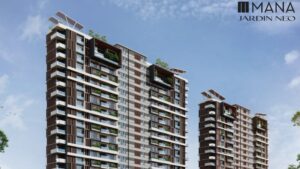The Indian real estate landscape is undergoing an incredible transition as luxury living becomes increasingly accessible to the ambitious and aspirational middle class. As metropolitan city peripherals constantly battle space constraints and ever-increasing prices, such areas are unfolding as the new preferences for premium residential developments, offering an attractive concept for developers and homebuyers.
The meaning of luxury has significantly unfolded over the past decade. Nowadays homebuyers, especially millennials, look out for more than just lavish interiors – they also desire a lifestyle that peacefully combines comfort, convenience, and sustainability. This shift in consumer preferences has catalyzed the development of integrated townships and premium residential projects in emerging growth corridors.
Take, for instance, areas like Gunjur in Bangalore or the rapidly expanding Electronic City. These locations exemplify how peripheral areas are successfully delivering luxury living at more attainable price points. Modern amenities, spacious layouts, and abundant green spaces – features once exclusive to prime urban locations – are now becoming standard offerings in these emerging corridors.
This trend of investing in Luxury spaces has recently accelerated, with homebuyers increasingly prioritizing space and wellness-oriented amenities. Work-from-home culture has reduced the traditional emphasis on traveling to offices, making central locations more preferred and attractive options for homebuyers. These areas offer the luxury of space – both inside homes and in common areas – empowering developers to build communities rather than just residential buildings.

What makes these city-central locations attractive is their perspective for capital value. As infrastructure develops and connectivity improves, these areas are prone to becoming tomorrow’s primary locations for homebuyers. The upcoming metro lines, ring roads, and expressways are not just improving transportation and accessibility but are also generating the development of social infrastructure – schools, hospitals, and retail spaces.
However, the advancement of these emerging luxury corridors is not only about lower land costs. It is also about smart location planning and development that caters to emerging lifestyle aspirations. Millennial homebuyers are looking for amenities that provide to their active lifestyles – from jogging tracks and sports facilities to meditation gardens and co-working spaces. The luxury of space in such central locations permits the developers to include these features without much impact on the affordability aspect of the homebuyers.

Looking ahead, the growth potential of these peripheral luxury corridors appears promising. As Tier 1 and 2 cities continue to expand, well-planned residential developments in peripheral areas will play a crucial role in meeting the housing aspirations of India’s growing middle class. The key to success lies in maintaining the delicate balance between luxury amenities and affordability while ensuring sustainable development practices.
The democratization of luxury living through peripheral development is more than just a market trend – it’s a reflection of evolving societal aspirations and changing definitions of premium living. As these new growth corridors mature, they are set to redefine luxury living in India, making it more inclusive while maintaining its aspirational value.

